Tanystylum occidentalis (Cole, 1904)Common name(s): Sea spider, pycnogonid |
|
| Synonyms: | 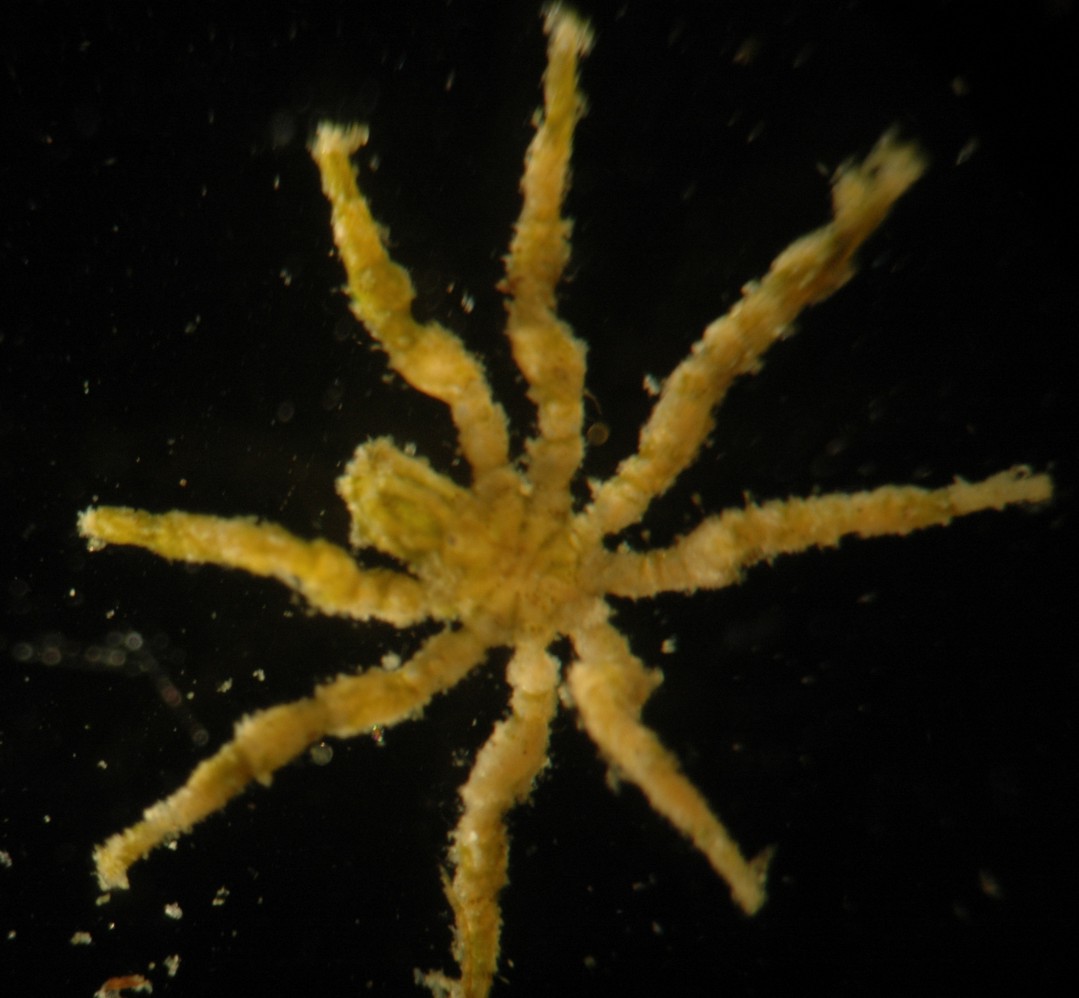 |
| Phylum Arthropoda
Subphylum Chelicerata Class Pycnogonida Order Pantopoda Family Tanystylidae |
|
| Tanystylum occidentalis from under an intertidal rock near the S end of Lopez Island. Total leg span about 8 mm. | |
| (Photo by: Dave Cowles, July 2006) | |
How to Distinguish from Similar Species:Tanystylum spp have a proboscis which is at least 3x as long as its diameter at the base and tapers to a conical point. T. anthomasti is covered with setae and is usually associated with Gersemia rubriformis. Most other species have well-developed chelicerae.
Geographical Range:
Depth Range:
Habitat: We found it under a rock in the intertidal.
Biology/Natural History:
| Return to: | |||
| Main Page | Alphabetic Index | Systematic Index | Glossary |
References:
Dichotomous Keys:Kozloff 1987, 1996
Smith and Carlton, 1975
General References:
Scientific
Articles:
Web sites:
General Notes and Observations: Locations, abundances, unusual behaviors:
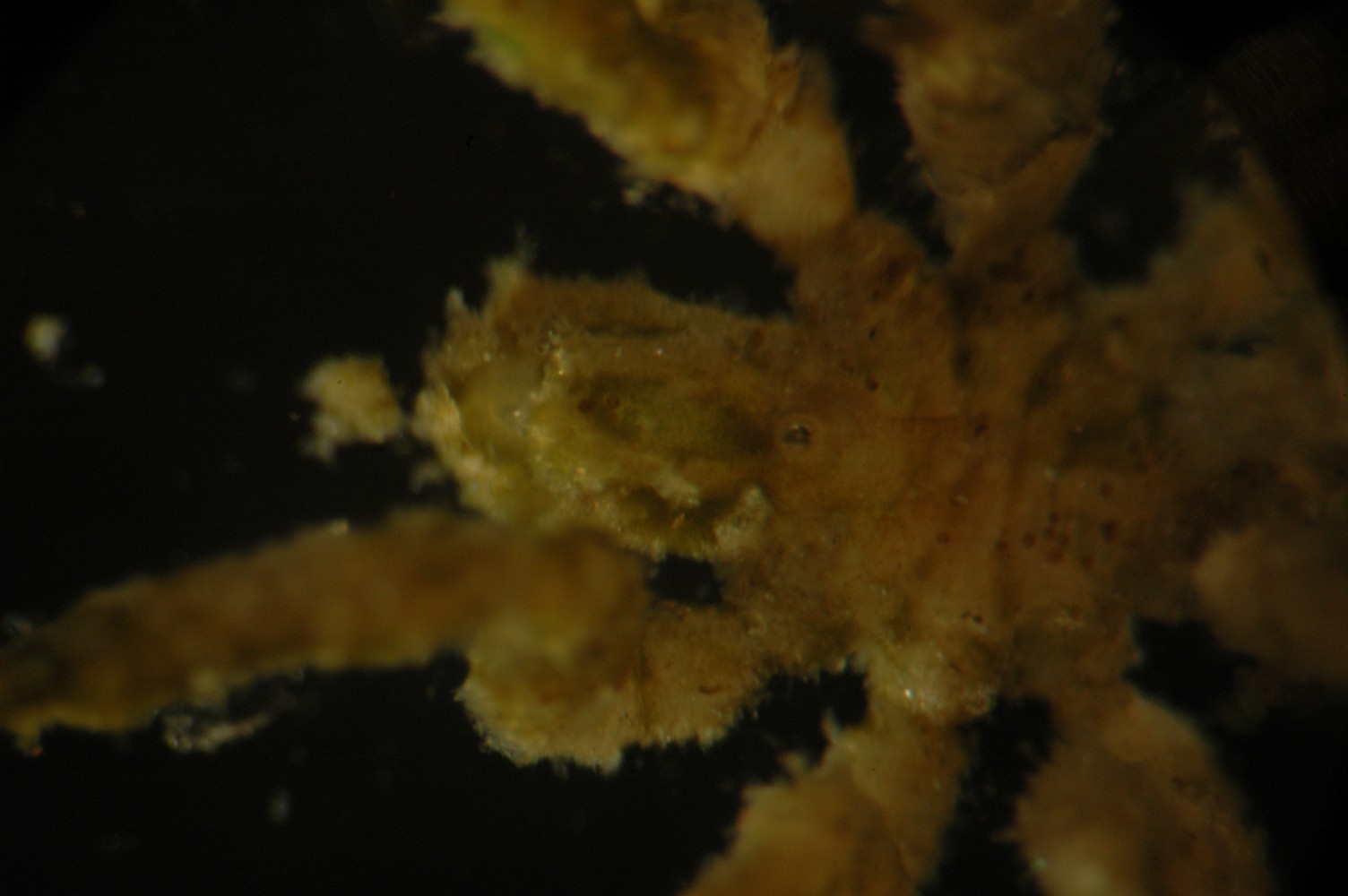
In this closeup view one can see the tiny turretlike head with 4 eyes
(near the left end of the body, between the left (front) pair of
legs).
The proboscis
is
much larger than the head and extends to the left of the body.
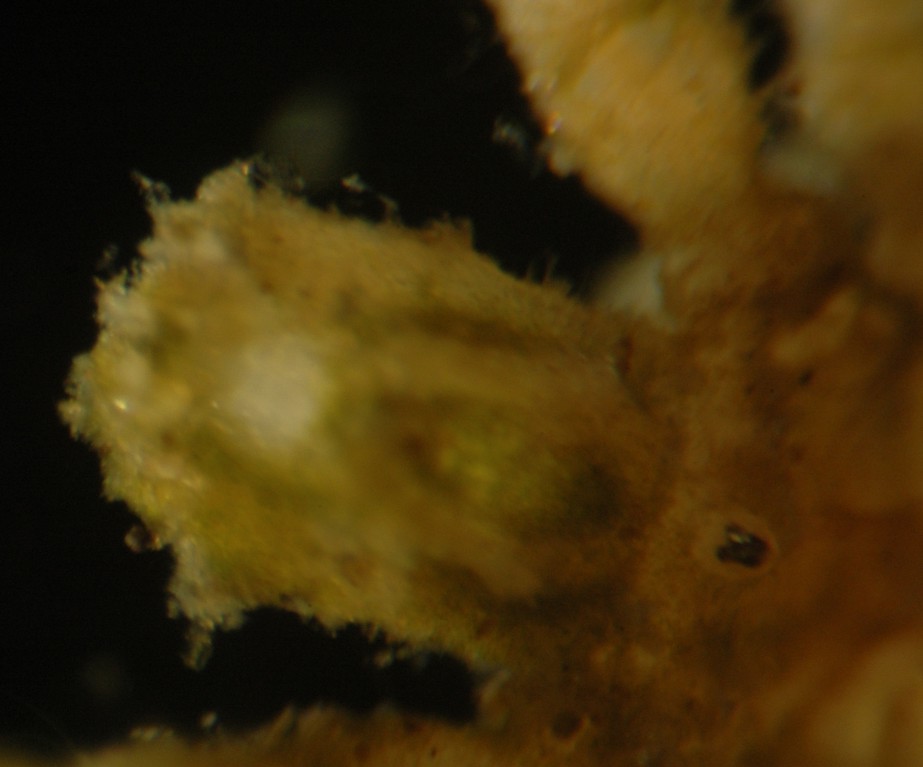
Here is an even closer view of the turret-like head, which appears
as a small tubercle
covered with 4 eyes, and also of the proboscis
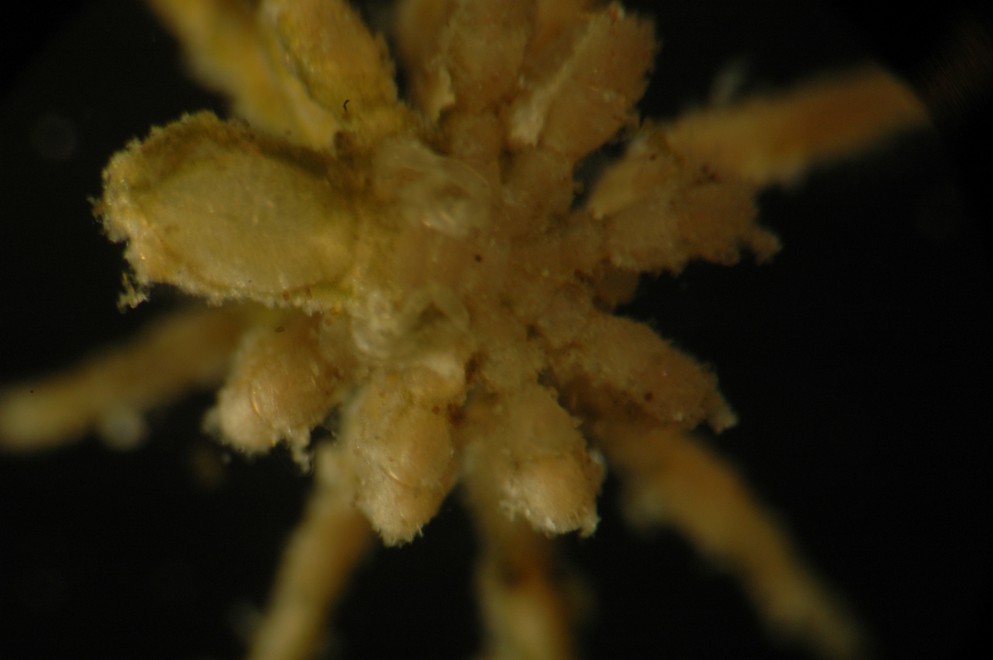
In this ventral view, the small ovigerous
legs can be seen on the underside of the first body segment (left side,
just to the right of the proboscis).
Here the animal is extending its other, walking legs upward and away
from
the camera. The proboscis
is to the left. Females of some families lack ovigerous
legs and in other families they are reduced in females.
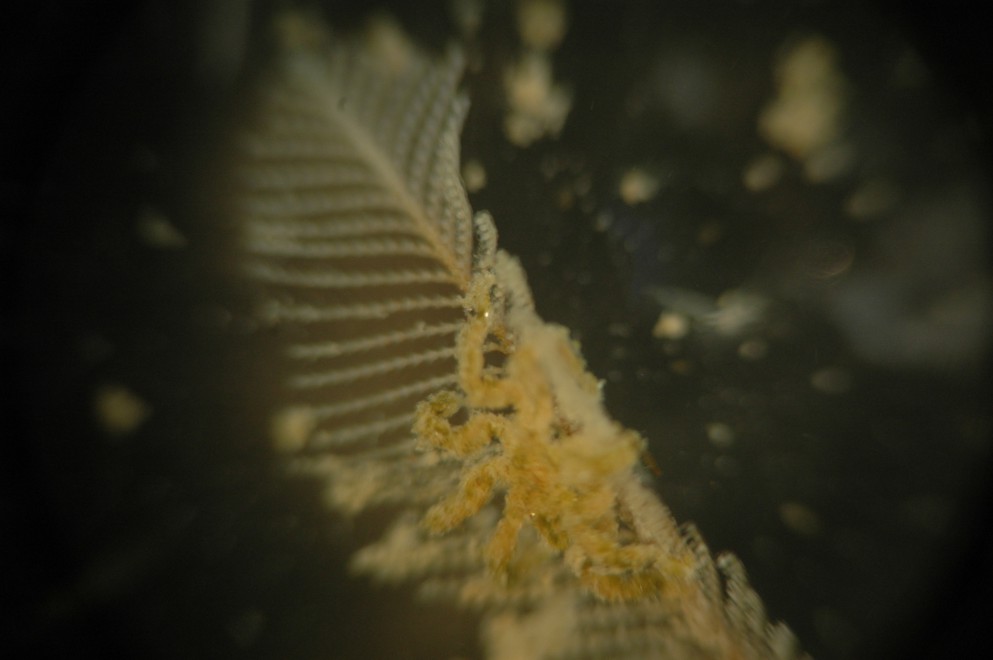
Pycnogonids are frequently found clinging to hydroids, as here on the
hydroid Aglaophenia sp.
Authors and Editors of Page:
Dave Cowles (2006): Created original page